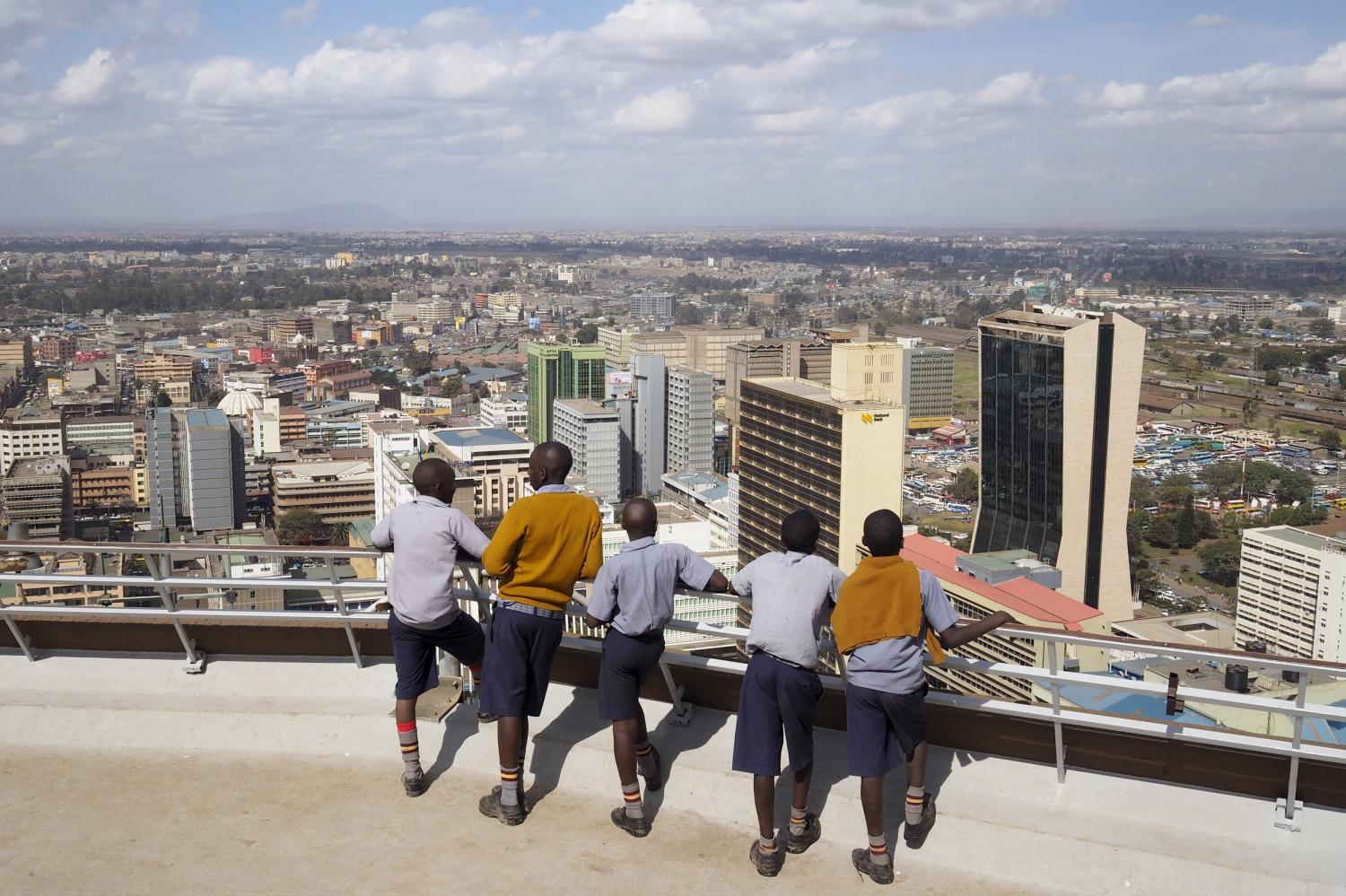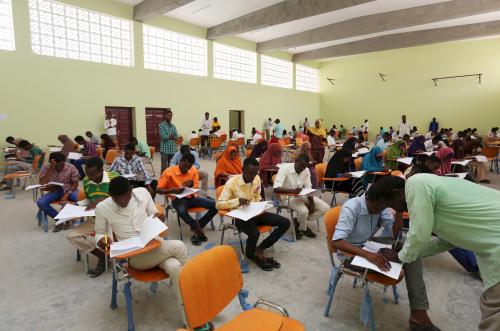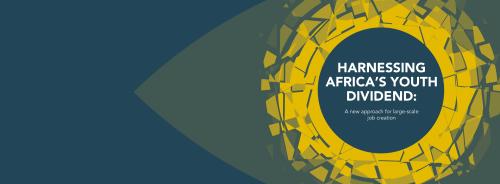Africa’s youth are key forces of sustainable development. Indeed, both the African Union’s (AU) Agenda 2063 and United Nations’ 2030 Agenda for Sustainable Development identify youth as key partners of sustainable development, though the youth empowerment agenda is often set aside as part of the social inclusion agenda rather than the structural transformation one. Two of the region’s megatrends, urbanization and demographic transition, call for a paradigm shift toward youth-centered sustainable development. First, Africa is quickly urbanizing, primarily due to natural population increase in cities and peri-urban areas. Second, its youth constitute a large share of the continent’s population, with 43 percent of the African population aged under 14 years old (World Development Indicators, 2016). Africa must prepare itself for reaping the socio-economic benefits of its demographic dividend and leverage forces of urbanization to deliver the much-needed job creation and structural transformation of African economies.
The demographic trends above present both opportunities and challenges for Africa’s policymakers and development partners. On the one hand, the ample supply of a youthful population presents Africa with a dynamic, collaborative, flexible, and forward-looking labor force, which is the premise of Africa’s demographic gift. At the same time, urbanization has immense potential to be a catalyst of youth empowerment and structural transformation efforts. If ill managed, on the other hand, the combined forces of youth unemployment and growing urban inequalities and poverty threaten social development in Africa, making youth more susceptible to social ills such as crime and terrorism, as well as spurring the exodus of Africa’s youth to the Middle East and Europe, risking their lives in search of better economic opportunities.
Globally, nations expressed their commitments to readdress the way they plan, manage, and finance urbanization at the UN Conference on Housing and Sustainable Urban Development (Habitat III) in October 2016 in Quito, Ecuador. The African Urban Agenda program (AUA)1 aims to address Africa-specific urbanization challenges and seize the opportunities urbanization, the demographic dividend, and regional integration bring to realize the aspirations of Agenda 2063; the SDG on sustainable human settlement (Goal 11), and the implementation of the New Urban Agenda (NUA).
To discuss these challenges and ways forward, high-level African policymakers, urban experts, representatives from the private sector, youth, and academia gathered at the UN expert group meeting on “The New Urban Agenda and Demographic Dividend: Investments for Africa’s Youth,” in Dakar, Senegal, in March 2017. Participants unanimously agreed that these two trends can be dealt with in tandem by mainstreaming a youth empowerment agenda into various structural transformation and sustainable urban development agendas.
The NUA, Agenda 2063 (particularly aspiration 6 on advancing people-driven development and unleashing the potential of women and youth), and the AU’s roadmap for harnessing the demographic dividend provide guidance on areas of intervention for youth empowerment. The AU roadmap for harnessing youth potential (and its four main intervention areas of employment and entrepreneurship, education and skills development, health and well-being, and rights and empowerment of youth) gives focus to Agenda 2063’s goal 6. The African Urban Agenda, ahead of UN Habitat Conference in 2016, urges the need to shift global commitment from one that affirms cities as sites of sustainable development to an agenda that sets out appropriate response to the African urbanization megatrend, acknowledging the centrality of cities as urban pathways of national and global development, notably focusing on urban-rural linkages, the deep poverty of many in African cities and the aspirations of the youth on the continent.2
This report has two goals. First, it summarizes the peculiarities of Africa’s urbanization pattern and the challenges and opportunities it presents to the implementation of the NUA. Second, it highlights policy intervention areas for forces of urbanization to harness Africa’s demographic dividend and facilitate sustainable development.
-
Footnotes
- According to UN-Habitat, “Inspired by the strategy document ‘Optimizing the Urban Advantage,’ which emerged from the fourth edition of the African Ministerial Conference on Housing and Urban Development (AMCHUD4) in 2012, and guided by the African Union’s Agenda 2063, the Africa Urban Agenda Program (AUA) aims to raise the profile of urbanization as a force for the structural transformation of Africa.”
- UN (2015), Towards an Africa Urban Agenda, United Nations Human Settlements Programme (UN-Habitat) and United Nations Economic Commission for Africa (UNECA)
The Brookings Institution is committed to quality, independence, and impact.
We are supported by a diverse array of funders. In line with our values and policies, each Brookings publication represents the sole views of its author(s).






